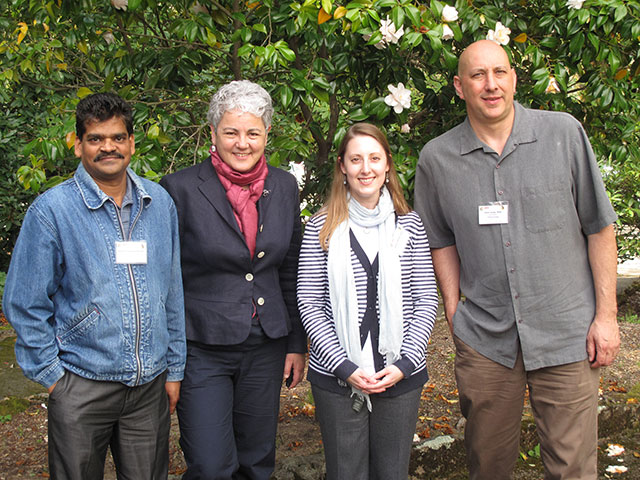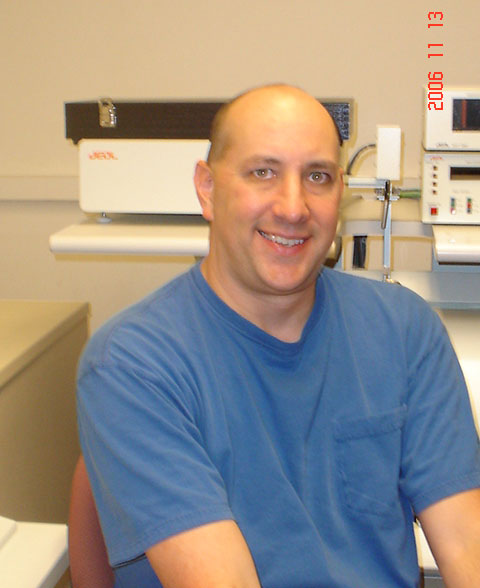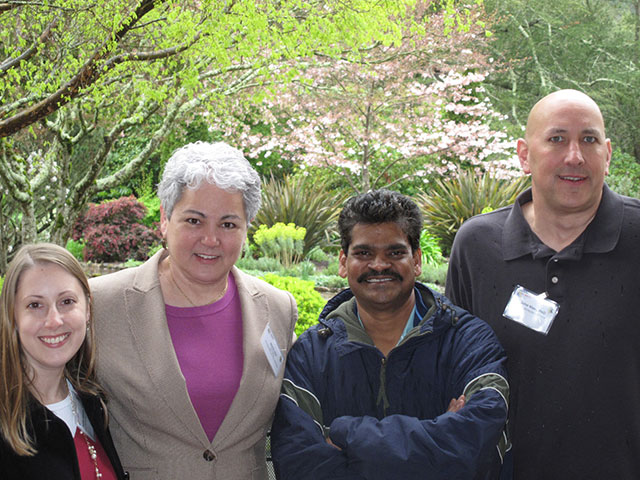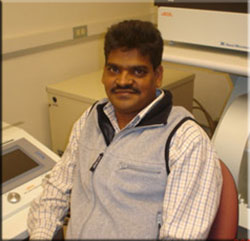Our Team








Current Members

John Voss, Ph.D.
Principal Investigator
jcvoss@ucdavis.edu
(530) 754-7583
Dr. Voss's research interests are in observing molecular switching in proteins, as well as protein folding and assembly. This work is carried out in large part through the use electron paramagnetic resonance (EPR — a.k.a. ESR) spectroscopy of site-directed spin labels. His team uses this approach to address problems in several biological systems, including those related to cardiovascular and neurodegenerative diseases.
Click here to see his representative Publications »
John C Voss on ResearchGate »

Madhu Budamagunta, Ph.D.
Project Scientist
msbudamagunta@ucdavis.edu
Dr. Budamagunta is a nationally and internationally renowned scientist in the area of biological magnetic resonance spectroscopy. His field of expertise is “Electron Paramagnetic Resonance (EPR) Spectroscopy”, a unique technique and powerful tool in several disciplines starting from Solid-state materials to biological/medical applications. Electron paramagnetic resonance (EPR, a.k.a ESR) spectroscopy is a technique for studying the chemical species that have one or more unpaired electrons such as organic and inorganic free radicals or inorganic complexes possessing a transition metal ion. The potential of ESR is exemplified by its high spin sensitivity, its excellent spectral resolution, its high sensitivity to the motion of molecules, its ability to image a probe molecule with micron resolution. All in all, EPR provides a powerful and unique combination features central to molecular science.
With spin labeling reagent, Dr. Budamagunta can introduce a unique and stable species whose unpaired electrons produce a unique EPR signal. When the spin label is attached to a biological molecule the EPR signal (spectrum) reports on motions and structure within the molecule. This approach, known as site-directed spin-labeling (SDSL) represents one of the most powerful techniques currently available to investigate structure-function relationships in protein and DNA, the molecules whose activity provides the fundamental processes of life. In addition, EPR analysis can now be used in vivo, including imaging of structures visible only to EPR, providing a new Magnetic Resonance Imaging tool. The application of EPR technology is not limited to living systems. For example, because of its high sensitivity, EPR has recently been used to measure the quantity of energy used locally during a mechano-chemical milling process, semi-conductor doping, archeological dating, and food science. In summary, EPR spectroscopy is striving to bridge the gap between laboratory science and clinical medicine.
At present Dr. Budamagunta is developing new EPR tools to study the structural dynamics and folding of several proteins that are especially important in human health and disease. His research contributions have made a significant impact in several fields, as communicated in more than forty peer-reviewed publications in internationally-reputed journals that span multiple disciplines.
Click here to see his representative Publications.

Silvia Hilt
Postdoctoral Fellow
(530) 752-3164
slhilt@ucdavis.edu
Siliva Hilt is currently a Ph.D. candidate in Biochemistry and Molecular Medicine with a designated emphasis in Biotechnology (BMCDB/DEB graduate group).
Her field of interest is in protein folding and the effect misfolding has on protein functions. Her specific interest in the Voss Lab is focused on apolipoprotein E, especially apolipoprotein E4, and how pathological conformations affects protein functions. She uses EPR (Electron Paramagnetic Resonance) of site-directed spin labels and CD (circular dichroism) spectroscopy to determine conformational stability and protein interactions relevant to cardiovascular and Alzheimer's Disease.

